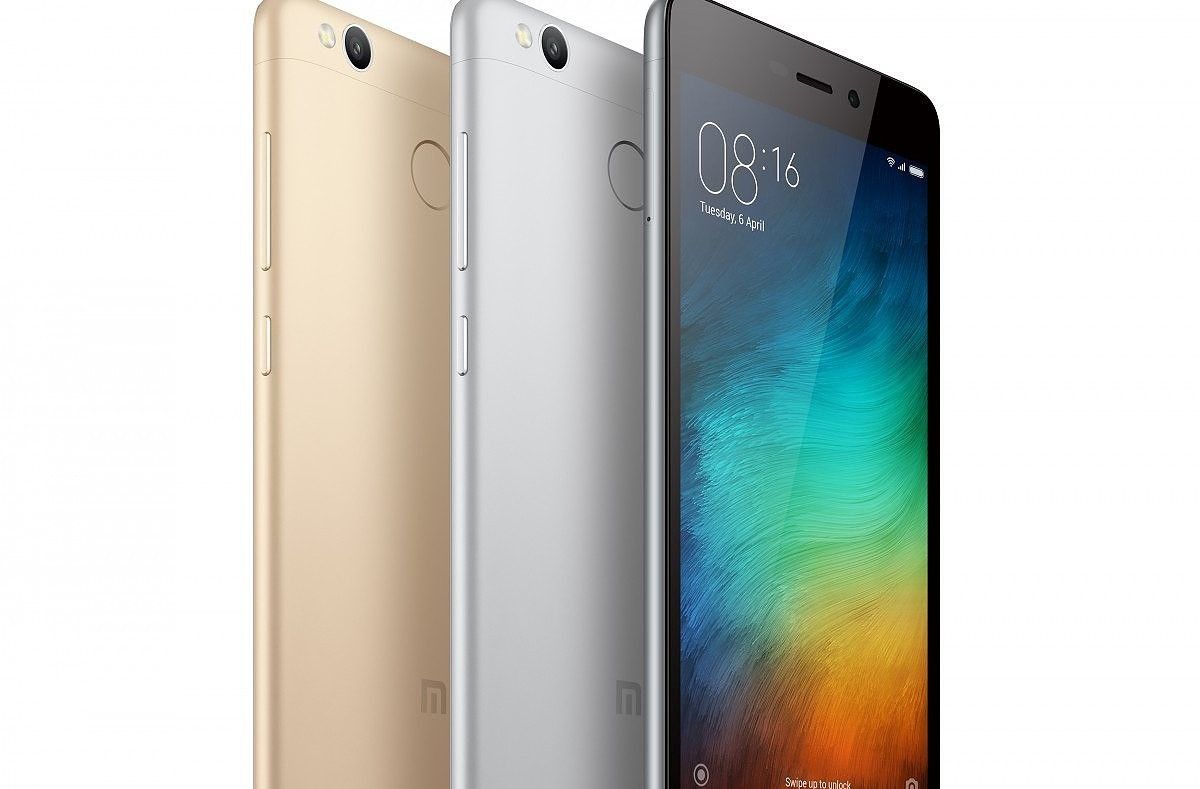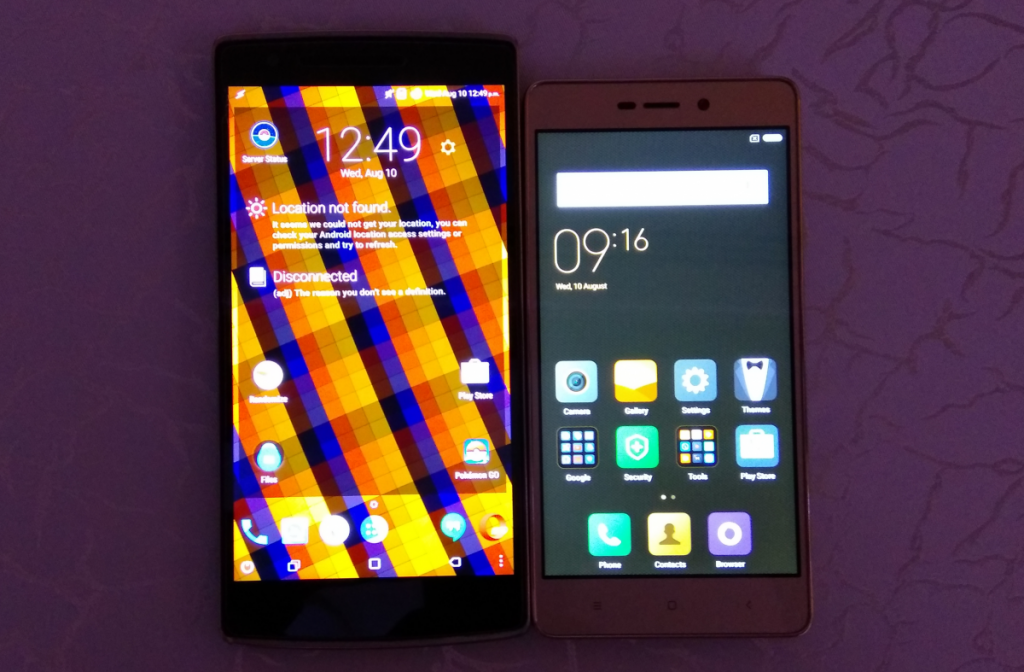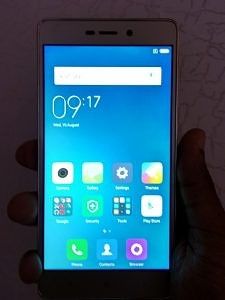Xiaomi's Indian launches are accompanied with a lot of fanfare: there's big venues, a lot of Mi fans are invited, extensive talks and demo... they go the whole nine yards. But with the Redmi 3S, Xiaomi chose to come in without too much ceremony.
The phone actually went on its first sale before a media or a public event was held, on the 9th of August, but that does not mean the phone is any less.
I had a chance to play with the Redmi 3S and the Redmi 3S Prime at a Media Meet held in Mumbai on the 10th of August. The Redmi 3S and 3S Prime are very similar devices, so I will just note the differences where they exist. For the most part, the experiences are interchangeable. So here are my quick, first impressions on the devices:
For starters, the design of the phones give you no clues on its pricing. It's got the same metallic build from the Redmi Note 3 with similarly-colored plastic caps on the top and bottom (that means it is not a metallic uni-body, as other blogs often quote these devices as being). There's a very impressive and sturdy feel in the hand. Since both the devices bear a 5" screen, their overall dimensions are also smaller and are on par with other 5" phones like the OnePlus X. After using the gigantic Mi Max for the past few weeks, it felt really good to finally have a phone in hand which you can grip without a worry in the world. The Redmi 3S is very pocket-friendly, and the thickness of the device is actually impressive considering how much battery capacity it packs in the body. During the event, Xiaomi India's Product Lead, Jai Mani mentioned how a very large chunk of the Redmi 3S and 3S Prime interior is basically occupied by the battery, and this decision was taken instead of making the phone thinner by trimming it by wild margins. Nonetheless, the Redmi 3S is actually thinner than its predecessor, so they managed to balance both.
The Redmi 3S and 3S Prime sport a 5" HD LCD display. These are essentially budget devices, so the decision to stick with 720p resolution is something that not a lot of its target audience would complain about. The pixel density of the device is 294 ppi, which comes off as good for its price range but nothing more. If you're willing to stretch your budget, you'll find competition bearing FHD displays (one of them is from Xiaomi's own stable). My interaction with the devices was limited, but I can see the display size and resolution working well in conjunction with the rest of the product specs and its budget.
One thing that miffed me with the Redmi 3S and the 3S Prime is that there are (thin) black bezel borders around the device, while the marketing material edit it out. This is common for a lot of Chinese smartphones sold in India, so much that most consumers are now used to it. I wish this trend changed with either the bezels being evenly colored throughout the front, or the marketing material stopped trying to mislead, but this is some wishful thinking on my end. Since the device is not marketed as a media-consumption device, this aspect of the device is something that can be ignored.
The insides of the Xiaomi Redmi 3S and 3S Prime is something Xiaomi is rather proud of. If you look at pure specs and numbers, the devices start with the Qualcomm Snapdragon 430 SoC, which packs a dual-cluster, octa-core configuration of Cortex-A53's clocked at 4x @1.4GHz and 4x @1.2GHz, built on a 28nm fabrication process. The Adreno 505 accompanies it on the GPU end. In comparison, the closest competitor to the SD-430 is the SD-616, which beats it in the peak clock speed (4x @1.7GHz) of the performance cluster, but seeing that both clusters are still based on the power-efficiency-based Cortex-A53, the difference is not too large.
The GPU on the SD-616 is older than that of the Adreno 405, so the SD-430 remains competitive overall. Again, the SD-430 is not a top-end SoC, but seeing the pricing on the device (especially the base variant) and the rest of its features, it is actually impressive.
The Redmi 3S comes with 2GB of RAM and 16GB of internal storage, while the Redmi 3S Prime comes with 3GB of RAM and 32GB of storage. Both can be expanded using the hybrid dual-SIM slot for an additional 256GB.
During my limited usage, the phones worked as well as phones usually do in demos. Apps opened snappily, and the phone gave no hints on its pricing with its performance. This is something that needs to be noted of in this price range, as phones often settle on the SoC, being the region where a lot of first-time customers are not informative on. Yes, the Cortex-A53's are not meant for performance-oriented tasks and both devices cannot claim to be gaming-friendly. But if you go in with expectations that match with the Redmi 3S's low price, you will walk out pleasantly impressed. The lower res screen will also aid with GPU performance, but again, gaming is still not expected to be the strongest suite and that is alright.
The camera setup on the Redmi 3S and the Redmi 3S Prime follows a 13MP rear shooter with a f/2.0 aperture and PDAF. There's LED flash as well, along with the capability to record 1080p videos at 30fps (which again, is nice enough for this price range). The front is a 5MP camera with f/2.2 aperture and again, 1080p video recording. Budget devices are not known for their camera prowess, and this will be no exception to the lot. Will it be ahead of its price competition? Possibly. Again, lowered expectations for lowered budgets.
There are a few interesting parts to the Redmi 3S and the Redmi 3S Prime which are not seen around in this price bracket(or even outside of it, to be honest). Both devices come with an IR blaster, a feature that even flagships have dropped off. If you set it up right, you can control all your home appliances with it, and in this segment, a feature like this is something that you can show off. Xiaomi's Mi Remote application supports quite a few appliances, and the setup procedure is also quite simplified if your device is within the supported models.
What you can also show off is the insane battery capacity and the (likely) ridiculously insane battery life. For a first impressions article to comment on battery life is a bit far fetched, but the ingredients are present to have Xiaomi knock it out of the park again. First, the battery is densely packed with a capacity of 4,100 mAh. The display is a 5" HD panel, and the SoC is comprised of Cortex-A53's which are primarily power-efficient cores. Add to that MIUI, which is heavily optimized for devices designed to run it, along with it keeping a tight reign on background apps. The end result is that the phone can likely achieve 2-days of battery life for most consumers with moderate use -- I comfortably obtained 1 day battery life with heavy use on the Redmi Note 3, and I can crank out 2 days of life with moderate use on the Mi Max. So I can confidently say that the Redmi 3S will follow along on the same footsteps, unless something goes horribly wrong. Getting regular two days of use on moderate usage, or one full day with heavy use should be achievable on the Redmi 3S if past experience as a reviewer is anything to base claims on.
The software on the Redmi 3S and the Redmi 3S Prime is MIUI 7.5 out of the box, running on Android 6.0.1. The review units were sporting the June security patches. Keeping in mind that these are starter devices, this is actually quite good. We can expect regular MIUI updates with security patches, but Xiaomi's MIUI updates do not exactly coincide with an Android version update. So you might still be on Android 6.0 even if you get MIUI 8 or whatever comes after it. Xiaomi did not make any official statement on this aspect of the device, so there is still hope.
Upcoming updates to MIUI on the Redmi 3S and 3S Prime in the form of MIUI 8 will allow two app instances to exist alongside (called Cloned Apps), which can open the door to using two accounts with several apps and games without needing to log in and log out from one. This can allow you to use two WhatsApp accounts (since it is a dual-SIM phone), lets you have separate instances of log-ins for work and personal social media accounts, two instances of games (Clash of Clans, anyone?) and so on. The feature is not live yet, so I could not demo it. But when it does go live, it will add to the value of the device.
The Redmi 3S Prime has one more distinguishing feature from the Redmi 3S, in addition to the differences in storage and RAM. The Redmi 3S Prime sports a fingerprint sensor on the rear, and this sensor is the same as the one on the Xiaomi Redmi Note 3. The Note 3's sensor worked quite well for the most part, so there should not be many complaints on this model. The fingerprint sensor is a bit recessed on the back, and with the overall dimensions of the device, it is very easy to reach with your index and middle fingers.
To conclude the first impressions of the Xiaomi Redmi 3S and the Xiaomi Redmi 3S Prime, I'd like to bring attention to the prices of these devices. The Redmi 3S will cost you just ₹6,999 ($105), while the Redmi 3S Prime will cost you ₹8,999 ($135). The pricing of the Redmi 3S is what I find really impressive, in terms of bang-over-buck from the Redmi 3S Prime. A difference of $30 gets you an additional GB of RAM (which makes a noticeable difference, as I will note in my Mi Max review), some more internal storage (you can expand via microsd) and a fingerprint sensor. Depending on your needs, these may be very useful to justify the increase in price. But looking from a starter device perspective, the Redmi 3S offers the better deal.
The Redmi 3S Prime, albeit still a good device, does not offer as much value as its base brethren. Xiaomi's own device in another segment gives it some very serious competition. If you add in another ₹1,000 to the price of the 3S Prime (totaling $150), you can snag up a Xiaomi Redmi Note 3 16GB. Granted, the RAM amount and the storage are step downs, but the increase in processing power thanks to the much-better Snapdragon 650, the increase in screen size and the bump in resolution make it worth the price. Unless you have a very hard budget limit of ₹8,999 ($135), it makes more sense to go with the much more powerful Redmi Note 3. I personally don't recommend people to buy the 2GB RAM variant of the Redmi Note 3 (Snapdragon 650), but if you are planning to go for the Redmi 3S, you may as well upgrade to this. Of course, if you can spare some more cash, the best deal and still the uncontested king in the lower mid-end is the Redmi Note 3 with 3GB RAM at ₹11,999 ($180).
As for the Redmi 3S, I think it is a very good deal. I have been looking for a replacement recommendation in place of the Moto E in the lower price brackets, and the Redmi 3S makes for a very good starter phone. It is not a flagship, it is not a mid-end device. It is a budget device, recommended for those that do not have very high needs nor high budgets, for those that want to get away from monstrous screen sizes, and for those that are looking for cheap burner phones. Thanks to the aggressive pricing on the part of Xiaomi on the Redmi 3S, it is very well the figurative Moto E of 2016. You just need to get used to MIUI, which can be harder than it sounds.
What do you think is the best low-end device? Let us know in the comments!



